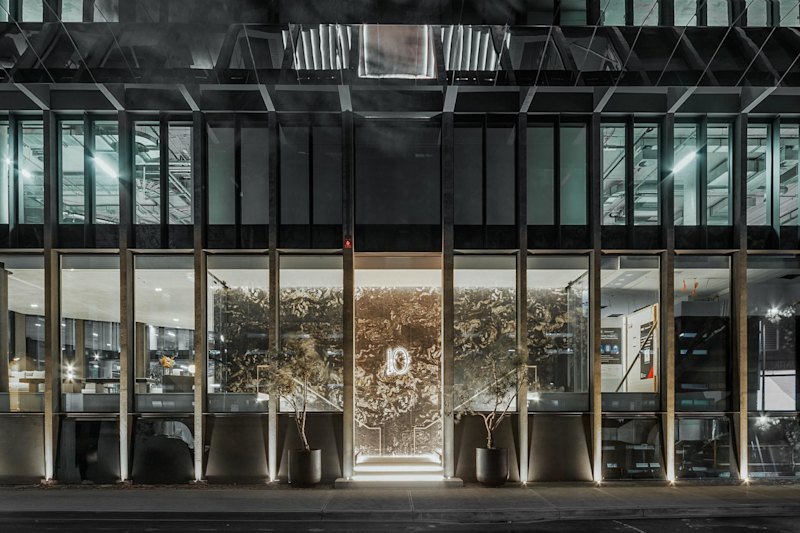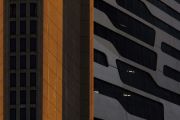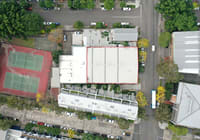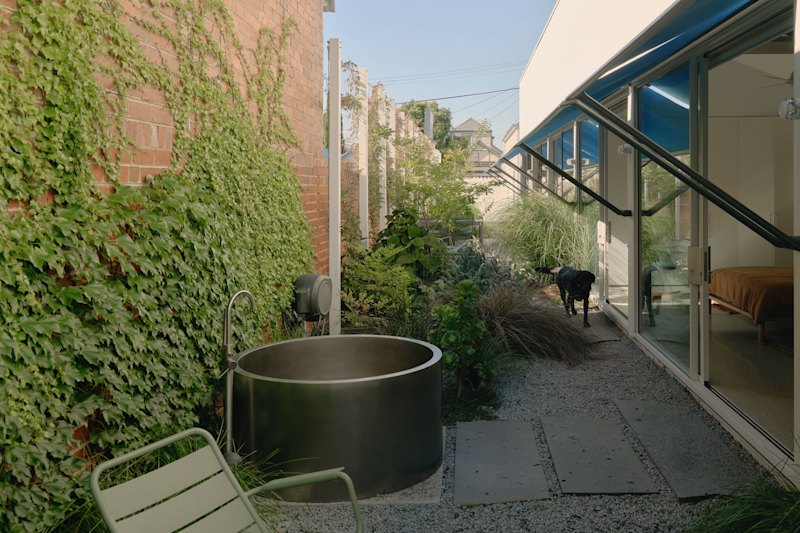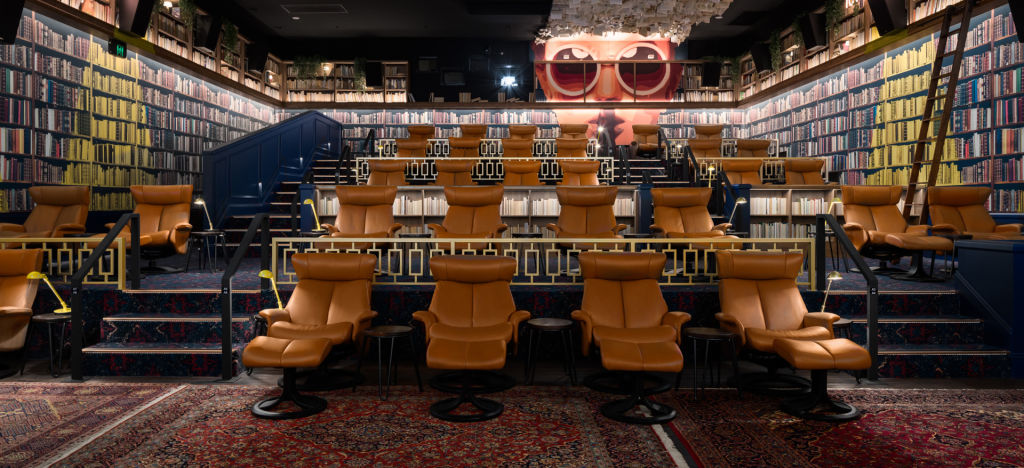
Daybeds and water jets: The reinvention of cinema in Australia
Seats that dip and swerve with the onscreen action along with water jets, rushes of air and smells to make you feel as if you’re really there. A platinum-class space with food and drink delivered to the world’s comfiest chair. Recliners replacing regular seats. And the second biggest movie screen on the globe…
Cinema in Australia is far from down and out after its pandemic pasting and the stellar success of streaming during the COVID lockdowns. Instead, it’s been quietly regrouping and is now raising the curtains on a whole new range of experiences.
“Cinema is absolutely on its way back!” declares Luke Mackey, director of entertainment Australia at Event Hospitality & Entertainment. “We really don’t see ourselves in competition with streaming, but with a night out at a restaurant, the theatre or a sporting event.
“During the pandemic, we suffered from lockdowns and limited movie releases. But what we’ve seen in the last couple of months with an incredible line-up of delayed releases has been people showing no hesitation in coming back. And our strategy for the future has been to improve the whole experience.”
Boutique national chain Palace Cinemas has also been reinvesting in its cinemas to lure customers out of their sofas and into their seats – handmade in Barcelona and hailed as the world’s best.
“People are doing entertainment by appointment now; less impulsive and more planned. So, they pick and choose their experiences and hibernate a bit in between,” says Palace chief executive Benjamin Zeccola.
“We’ve found special events such as Q&As with the filmmakers and opening nights and evenings with special introductions are going off, although regular mid-week sessions are 25-45 per cent down on pre-COVID levels. But, as confidence increases, we’ll see people return. Escapism and relaxation are more important than ever.”
The proportion of Australians attending the cinema at least once per year has averaged 67 per cent since 2000, with an average of about seven visits per year per person, on Screen Australia figures. In 2010, that put Australia at number three worldwide in cinema-going per capita, behind only Iceland and Singapore, and in front of the US.
The first year the pandemic hit saw that figure slump to 48 per cent in 2020 and drop further to 41 per cent in 2021.
Since then, however, says Anthony Grundy, distribution manager at Screen Australia, the figures are back on their way up, buoyed by the release of blockbusters like the new Bond movie No Time to Die, Spider-Man: No Way Home, The Batman, Sing 2 and Sonic The Hedgehog 2, and then, for the older cinema-goers, Downton Abbey: A New Era.
With so many delays over the past two years, three Australian movies even topped the charts for the first time ever in the first quarter of 2021 – The Dry, Penguin Bloom and High Ground – with hopes also firing for the May release, The Drover’s Wife.
“We are now really starting to see all audience segments returning,” he said. “As a territory, we love cinema-going. It’s a very important Australian pastime, and an important social and cultural activity.
“We have some of the best cinemas in the world, and now we’re seeing companies investing heavily in their upkeep and introducing new experiences.”
Event Cinemas, for instance, have five 4DX cinemas, with chairs equipped with 57 different effects, like motion simulators to mimic the action on screen, a gentle breeze or turbulent storm winds, back and leg ticklers, water sprays to create rain and mist and the scents of smoke, gunpowder and even coffee. Currently available in their flagship Sydney cinema in George Street, Parramatta, Brisbane’s Chermside, Pacific and Fair on the Gold Coast, they have plans to roll out more.
In addition, their two boutique cinemas in George Street, with a small number of luxurious reclining seats and footrests grouped in twos with big screens and coffee tables for the full menu of food and drink – one decorated with paparazzi images and the other with books as The Library – have proved immensely popular. As a result, they’re now opening others in Chermside and in Perth’s Innaloo, with new bars to accompany the theatres coming all the time.
There are also upgrades underway to Event’s V-Max cinemas, with big screens, fully reclining chairs and daybeds as well as the regular seats, and the luxury Gold Class theatres with food and drink in 24 locations have gone from six per cent of admissions in 2019 to 9.5 per cent.
Event Junior cinemas have just been opened, too, in Sydney’s Macquarie and NSW’s Shellharbour, with children’s playgrounds at the front for kids to have a play before settling down to watch a movie with the family. They’ll be extended to other centres.
“We’re also refurbishing four to five of our cinemas every year,” says Mr Mackey who believes the outlook is bright with more big movie releases on the way, like Dr Strange, Bullet Train, Top Gun: Maverick, Avatar: The Way of Water and Where The Crawdads Sing. “People want to go out and have the best experience they can.
“There’s nothing like the magic of seeing a movie with your family or on a date night. At home, you’re distracted by devices and putting the washing on. At the cinema, you can come to us and have two to three hours of total switch-off time and immerse yourself in another reality.”
Palace has opened a new cinema at Pentridge Coburg in Melbourne and is building another in Moonee Ponds. It has also just relaunched its Platinum offerings at Como and in Perth; its version of Event’s Gold Class and Hoyt’s Lux.
“It has electric reclining seats with food and drink brought to you, so it combines two experiences in one,” says Mr Zeccola. “It’s very luxurious and very special and people have embraced it enthusiastically. There’s now a push to roll it out to other sites around the country.
“We tend to have sophisticated and educated audiences and we offer popcorn made with quality olive oil and artisanal choc-tops. We’ve extremely optimistic about the future. Every house has a kitchen but we still go to restaurants and while they also have a lot of TVs, they’ll still want to be entertained in a cinema.”
Australia’s biggest screen, IMAX Melbourne – at 32 metres by 23 metres it is second only to one in Germany – is doing that with a vengeance. The rebuild and re-opening of IMAX Sydney, previously the world’s biggest screen, has been constantly delayed due to the collapse of its two builders, first Grocon, and then Probuild. It is not known when its doors will open again.
“I can’t recall the last time we had a four to five-month period of such high levels of attendance,” says IMAX Melbourne general manager Richard Morrison. “It’s been a great welcome back. With such a huge screen and such an immersive experience, which is so different from home, we’re pretty bullish about the next couple of years.”
Over at The HOYTS Group, there was a $250 million investment in its business just prior to COVID, replacing its seats with powered recliners as a standard offering. It’s also now opened four new cinemas, in Karrinyup, Perth, Cronulla in Sydney, Arndale South Australia and in Auckland, New Zealand, while it’s planning to expand its five D-BOX motion-seat cinemas, like Event’s 4DX, to 10 more sites in the next two years.
“We’re obviously about differentiating the home experience to the in-cinema experience,” says Damian Keogh, HOYTS president and chief executive. “The past two years have been a massive challenge with the loss of more than half our box office, but we’re now tracking at about 70 per cent of pre-COVID figures.
“We got some government assistance, and with shopping centres under pressure, entertainment and leisure are a big part of what they are doing, increasing foot traffic and supporting out of hours trading and to help feed the restaurants. We’re not out of the woods yet, but I’m confident.”

